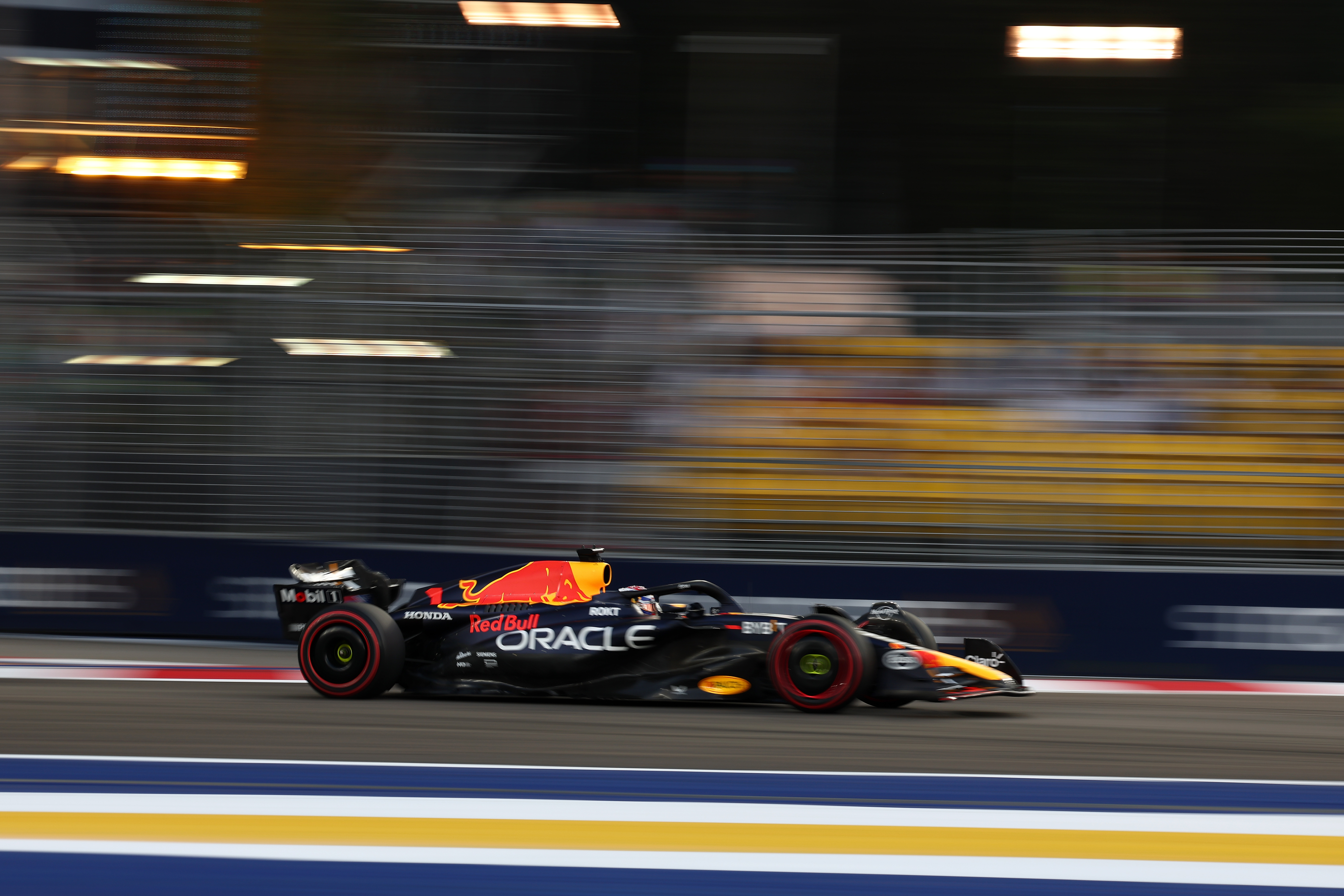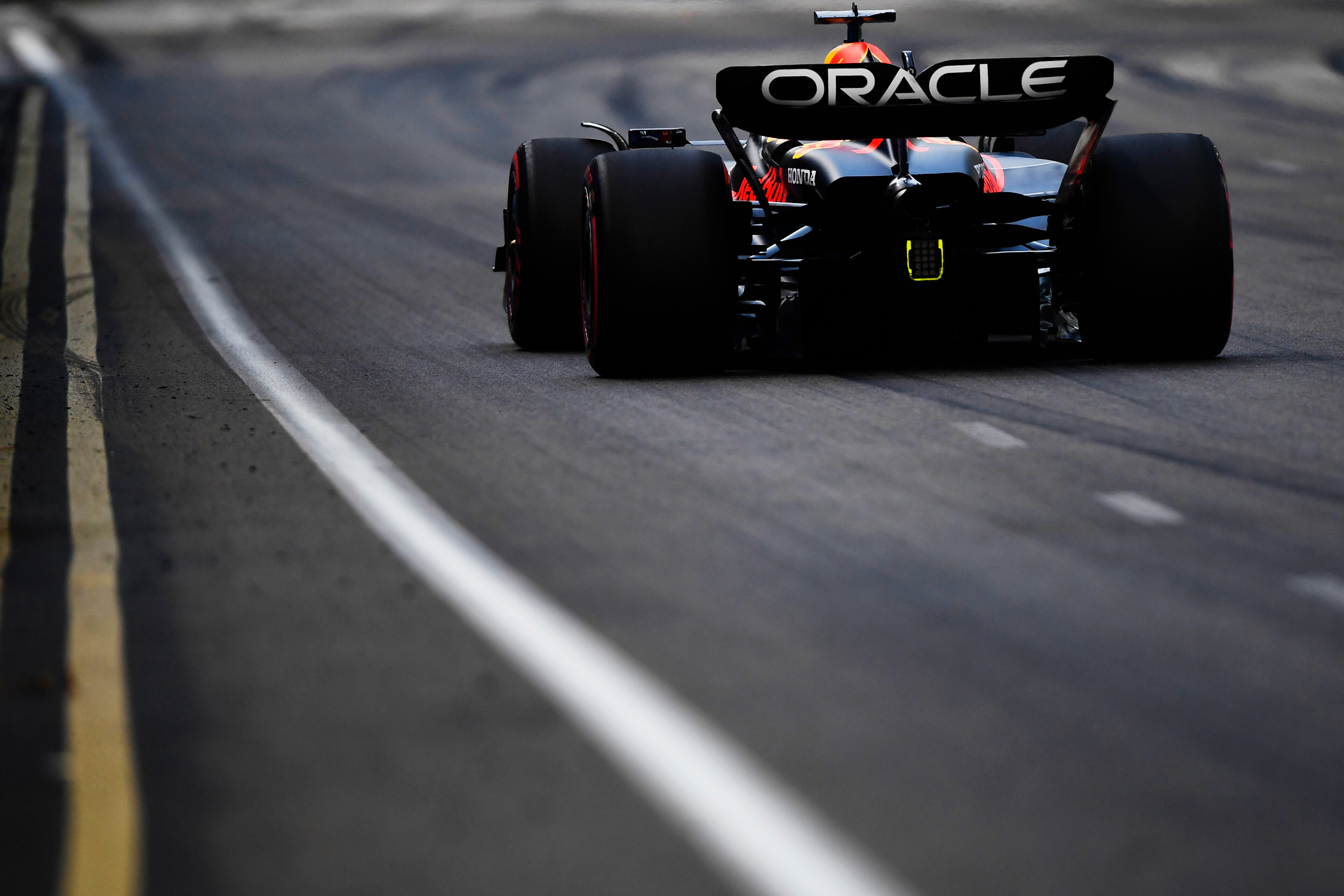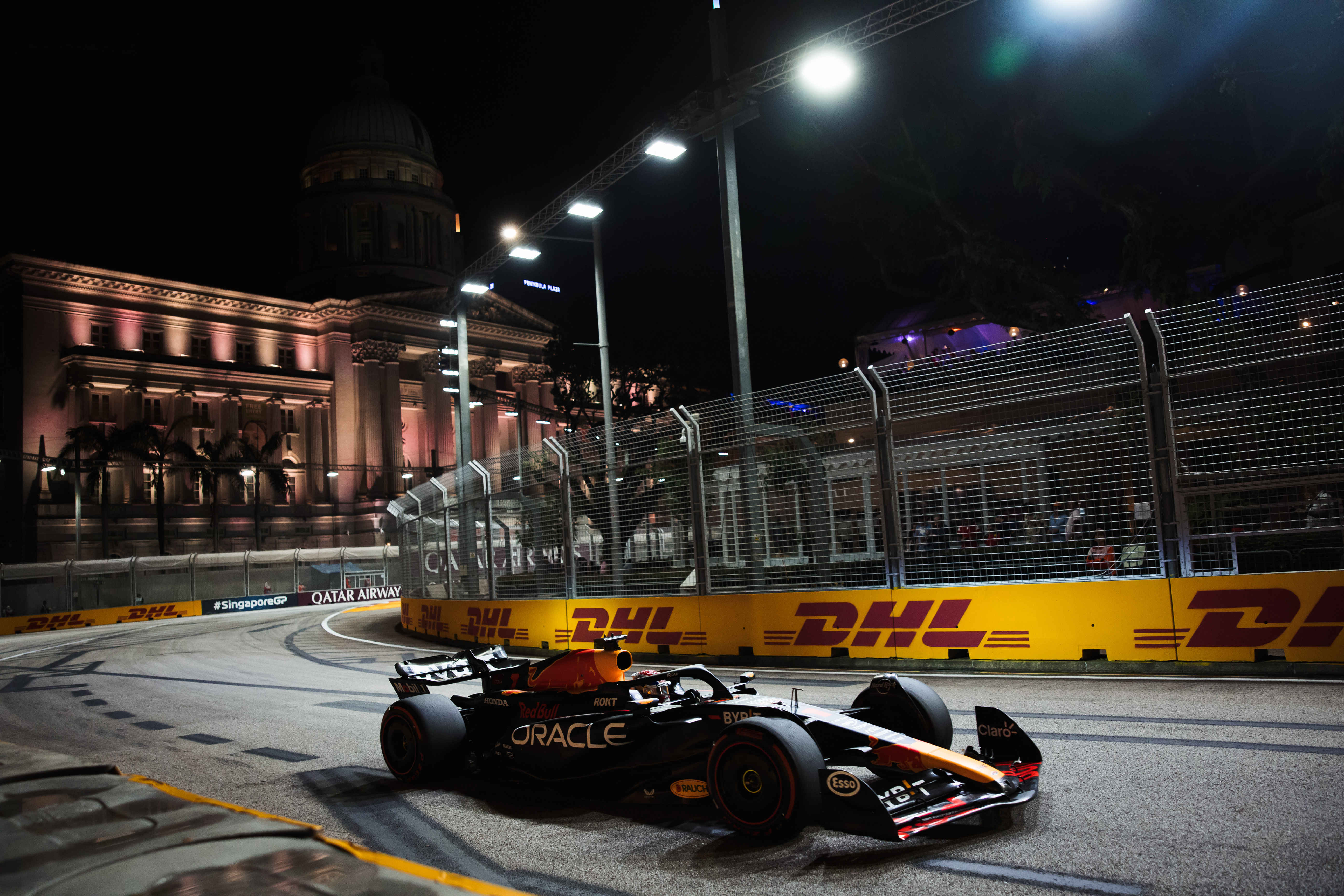In the last of our writers' highlights from The Race's 2023 content, Group F1 Editor Ben Anderson picks the immediate clarity Mark Hughes was able to offer amid Red Bull's shock, one-off fall from the Formula 1 summit at the Singapore Grand Prix.
Mark Hughes's F1 analyses are always essential reading, even on a race weekend that looks predictable - and there were plenty of those in 2023!
But when the competitive picture suddenly turns on its head, as it did in Singapore, then he's the guy you want helping you make sense of everything.
Mark's excellent insight into what prevented Max Verstappen accessing the otherwise dominant RB19's true performance also formed the basis for this video which comfortably ranked among our most popular videos of 2023.
This was a great example of maximising exposure for a vital piece of F1 insight.
Max Verstappen and Sergio Perez are each adamant that Red Bull’s victory sequence will be broken on Sunday, given that they’ve qualified 11th and 13th and they are absolutely not out of position – that is a genuine reflection of how competitive the Red Bull was around Singapore.
At least that’s how competitive they were with the set-up that they chose.
Maybe they didn’t find the ultimate set-up for the unusual demands of this place, but even if they had, this was always set to be a tough challenge for the traits of the car. “It already felt like that on the simulator,” said Verstappen afterwards, “that this was a difficult set-up window for the car. Then we went to Suzuka [on the sim] and it just felt amazing again – like most of the races”.

That’s the frame of reference with which to assess their performance. But even within that, this was a disastrous outcome. This track’s grip ramps up faster than anywhere with the possible exception of the Hungaroring. We saw that most dramatically between the first and second runs of Q1, where the track was around 1s faster, maybe more, in just a few minutes.
The track grip ramp-up through the weekend played its part in some of the key decisions that took the car off into what in hindsight was the wrong direction. “The car felt not too bad in FP3 this morning,” Verstappen allowed, “but then we tried a few more things on the car for qualifying and I think it tipped it over and it became undriveable again.”
So in analysing just what went so wrong we are looking at a car which was put fundamentally in a very difficult window by the particular demands of the track. But that should only have taken it from by far the fastest car to a merely competitive one. Missing the set-up window then prevented them from even achieving that.
Why does this track put the Red Bull RB19 into such a difficult part of its set-up window? There are some clues. On most other tracks this car can run a lower rear ride height than others without generating the bouncing phenomenon. That’s probably a function of its highly sophisticated high-roofed underfloor and its long travel rear suspension.
But at some tracks, there is a different limitation – that of grounding out the legality plank which defines the legal minimum ride height. Those other cars which cannot run as low as the Red Bull without triggering bouncing (ie all of them) don’t need to be concerned about grounding the plank so much that it wears away to make the car illegally low. Because they can’t run that low anyway. But Red Bull can. So at Spa and here in Singapore that becomes an issue of concern.

Red Bull has had to run the car much higher than usual to keep the car legal here – and unlike many of its rivals, its aerodynamics have not been optimised around such a ride height.
At Spa the grounding problem is created by the combination of Eau Rouge’s very high speed and the vertical load of the compression. Hence why Verstappen and Perez spent the whole race there backing off before the compression, where everyone else was flat. Hence Verstappen’s coded instruction from his engineer GP almost every lap as he rounded La Source to ‘use your head’. Around Spa Red Bull did not surrender the downforce which delivers the car’s fantastic performance. Rather than raising the ride height out of its natural window, they instead compromised by getting the drivers to manage the problem at the only part of the track where it manifested – by backing off. That’s why the two drivers in the fastest car in the field were the only ones not taking Eau Rouge flat.
But with the bumps of Singapore, such a solution wasn’t available. We can go to Alfa Romeo’s Valtteri Bottas for a further clue. Asked to explain why the Alfa qualified so badly, he replied, “I shouldn’t go too much into details but we basically saw from yesterday that with the set-up, ride heights, stiffness we had, we would probably be illegal after the race. So we had to make compromises that cost us downforce”. Alfa raised the rear ride height, in other words. Just as Red Bull had done already.

But there were further complicating factors for the Red Bull. Part of the RB19’s usual strength is its relatively soft, long-travel rear suspension. It’s this which plays its part in allowing the underfloor aero to work so effectively in providing big, consistent downforce throughout the speed range and various angles of roll, making it much less peaky in its downforce delivery than other cars.
After sim testing Red Bull came here with an even softer suspension than usual (soft by the super-stiff standards of ground effect cars). But on getting out on track it was clear that the resurfaced parts of the track had removed the bumps and made the grip level far higher than simulated – way too high for the soft suspension, and so the car was grounding out from the combination of high grip and high roll. But other parts of the track were still super-bumpy, preventing a reduction in ride height.
Furthermore, the increased movement from the soft suspension was probably disturbing the underfloor aerodynamics, which would make the car inconsistent and unpredictable. That was Friday. In the low grip of FP1 Verstappen was third quickest, just 0.1s off the Ferraris. As the grip ramped up for FP2 the problem became worse. The more the grip increased, the worse the balance became – and the more the car bottomed out even with its relatively big rear ride height. In FP2 Verstappen was only eighth fastest, 0.7s off the Ferraris. Both he and seventh-fastest Perez were complaining of a dire lack of rear grip.

Into Saturday, the car was run with stiffer suspension in an effort to tame the wildly fluctuating underbody aero balance and the potential plank wear problem. This just moved the problem around. It became more predictable but its deficit of rear grip was if anything even worse. Verstappen managed to coax fourth-fastest time from it, just over 0.3s off the Ferraris. But for Perez that balance was awful and he was almost 0.8s adrift.
But that was still good enough to have both cars in the FP3 top 10. If they’d just left it there, they may well have repeated that in qualifying. But this is Red Bull. Ambition pushes it on – and further changes were made. Changes which just made the car worse. “The car was massively bottoming out in the big braking zones,” recalled Verstappen. “Every time I wanted to brake late my front wheels were becoming unloaded – and on a street circuit that is something which is very crucial – to be confident on the brakes and attack the corners, so… I couldn’t do that and in the low-speed corners where I think we have been struggling already the whole weekend, I just had no rear support – so I kept on having mini-slides or in my final lap a big one at Turn 3. When it’s like that there is no lap time.”
Hence P11 on the timesheets.
The combination of tailwind and a sudden spike power delivery was enough to spin Perez out of his final lap at that same Turn 3, with his first Q2 run good only for P13. “Nothing worked,” he summarised. “Plus for me, I just couldn’t get the tyre temperatures.”
This being the first race at which the revised tech directives regarding flexing parts are being applied (the updated TD18 and TD39), invariably there were questions about whether this had neutered a previous Red Bull cleverness.
If we get to Suzuka next week and the RB19 is still struggling, that might be a theory worth pursuing. Chances are, it won’t be.
The Race’s comments section is changing – find out more here

